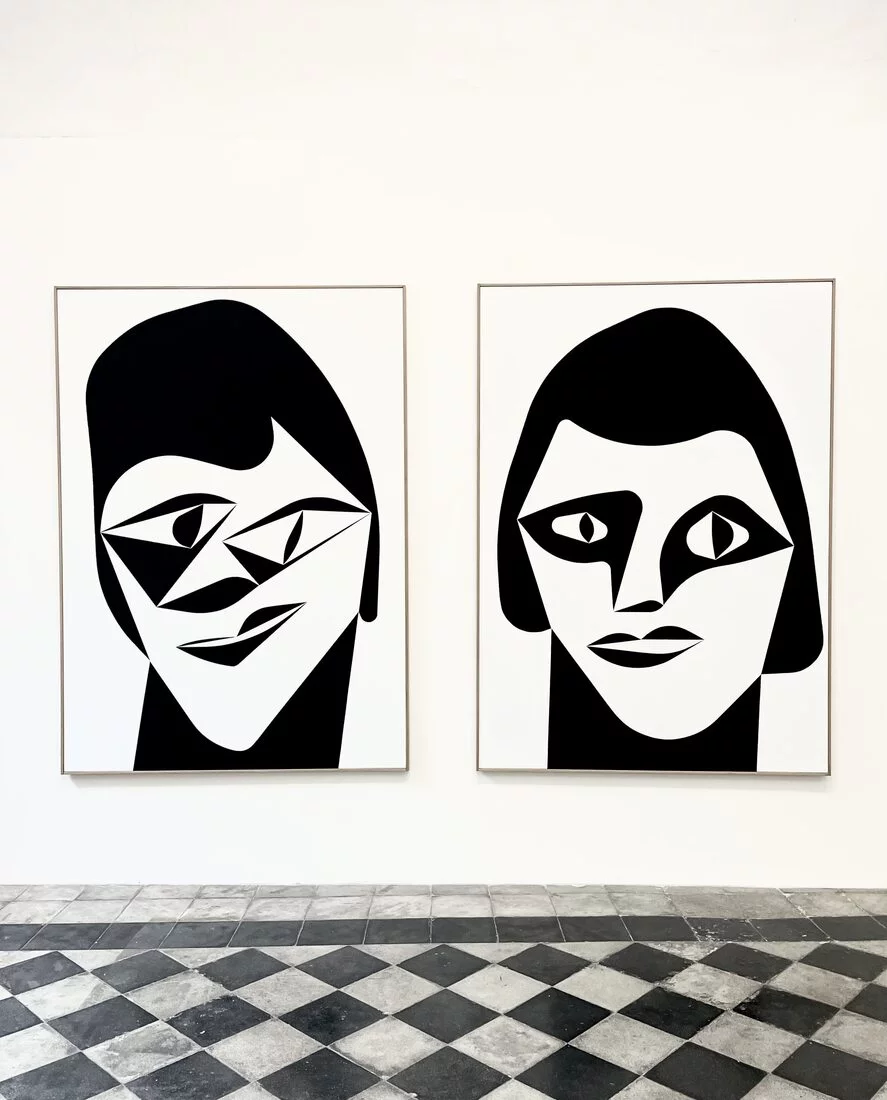Sergio Lombardo. Extra-Humans, stochastic face generation
- When: June 06, 2023 - September 23, 2023
- this event is ended
- Place: Roma, Galleria 1/9unosunove
- Region: Lazio
Contemporary artArt Exhibitions in Roma

1/9unosunove Gallery is pleased to present Extra-Humans, stochastic face generation, a solo exhibition by Sergio Lombardo. The opening will be held on June 6, 2023 from 6 p.m. at 1/9unosunove in Via degli Specchi, 20. The exhibition will be open until September 23, 2023.
EXTRA-HUMANS, stochastic face generation
1 - Creative machines
Many artists produce works constructed by algorithms and digital programmes, but I do not know of any artists who invent algorithms or digital programmes that generate works of art. Artists almost always buy graphics programmes to which they merely give instructions. On any smartphone, for example, you can find applications to modify the photo of a face by applying moustaches, glasses, hats, or make the face fatter or thinner, change its colour, and so on. Everyone is now familiar with programmes such as Midjourney, Stable Diffusion, Deviant Art, Dall- E, Chat GPT, which generate images on description. They can create human faces so realistic that
they look like photographs of real people. The artist only has to tell the machine 'create the face of a curly Chinese girl with blue eyes', or 'create the face of an African child with straight blond hair' and the algorithm, the machine (Dall-E 2021) instantly mixing many millions of data extracted from the web, produces an unlimited number of them: all different faces, all equally realistic, they look real.
The prompt can also call up surreal mixtures of things, animals, landscapes, such as 'create a flying dog on Mars with green wings'. What has the machine actually 'created'? It extracted the features requested by the user from billions of already existing photographs and reassembled them. Constructing an image by choosing and reassembling its parts is a very ancient creative process that I call Socrates' algorithm. Thus, in fact, Xenophon relates Socrates' words to the painter Parrasius: 'And when you depict models of beauty, since it is not easy to find a man perfect in every part, you, by putting together the most beautiful details taken from each individual, make the whole body appear beautiful' (Giannantoni 1971).
Aesthetic evolution, however, does not occur simply by applying Socrates' algorithm, not even if the algorithm could absurdly distinguish the beautiful from the ugly. The contemporary artist, who is now 'digital', should himself create programmes and algorithms aimed at producing works of art based on his own original and innovative aesthetic theory. For many of today's artists, however, the search for a theory appears to be a waste of time, because market insertion has become the only definition of art and thus the only valid artistic and aesthetic theory.
Even Robert Pepperell's Post-Human Manifesto does not overcome the idea that the market is the only value of art. "What is art? A useful definition is that it describes a product of the art market' (Pepperell 2006, VII, 1). "To be clear: the art market can be defined as a defined set of institutions and commercial organisations that collectively found, promote and sell art" (idem VII, 3).
Not a comma has changed since the programme 'Creating the Creative Artist' created more than fifty years ago by the American psychologist Burrus F. Skinner (1970) during the Cold War. His programme was often criticised by me because 'without knowing what art is', ignoring scientific theories and the historical evolution of artistic research, he solicited tax subsidies: 'positive psychological reinforcements' to those who bought any work of art. In this way the U.S.A. would 'create compulsive collectors' who in turn would 'create the creative artist'. Today we harvest the poisoned fruits of that approach on a global level.
Pepperell's manifesto distinguishes between aesthetic value and artistic value, for example a sunset can have aesthetic value but no artistic value, while a work of art can be sold at high prices without having any aesthetic value. In this way, aesthetic value, which for millennia was the discriminating element between a work of art and a worthless object, and which for millennia was at the centre of philosophical debate, a symbol of the cultural identity of entire civilisations, is now considered worthless unless it is financed by a wealthy merchant, or by state political appropriations. The cultural identity of the entire Western civilisation is thus reduced to its commercial value, art is measured by the market, which in turn is directed by politics. "Many people think that much modern art is not art, because they believe it lacks aesthetic value, even though it commands high prices on the art market. They are simply confusing the artistic value and the aesthetic value of an object” (idem VII, 2). Here Pepperell is instead confusing artistic value and commercial value. Artistic value, in fact, does not only include eventual commercial value, but is composed of several, entangled factors, foremost among which is the 'event' value.
Pepperell's manifesto in some points is compatible with my Eventualist Theory (1987, 1998, 2015, 2018). So much that at first I even considered calling my works created by applying stochastic algorithms on minimal prototypes of faces (2021) 'Post-Humans' or 'Trans-Humans'. I then decided to call them 'Extra-Humans' (Zacchini 2021) after my works from the 1960s: 'Extra Dots', 'Extra Stripes' 1965-66, and the exhibition 'Extra: Bignardi, Kounellis, Lombardo, Mattiacci, Pascali' at the Wiesbaden Museum (Boatto 1968).
Like the Unpredictable Faces, the Extra-Humans are also generated by stochastic algorithms that create extra-realistic faces, completely unrelated to human intuition, imagination and creativity. Perhaps some might see in it a dystopian and monstrous world, contrary to the ideal beauty of the human face, but the eventualist stimulus must evoke a spectrum of opinions, judgements and projective interpretations as divergent and even conflicting as possible, something that neither Platonic idealism, nor Socrates' algorithm, nor Pepperell's manifesto, nor Chat GPT could do.
2 - Extra-Humans, 1/9unosunove Gallery, Rome
A series of 24 Unpredictable Faces already published in the Rivista di Psicologia dell'Arte (2022) and an unpublished series of 15 Extra-Humans are part of this exhibition. Both series were generated with the V-RAN algorithm (1993) and subsequent modifications. In particular, the following parameters were modulated. In the 24 Unpredictable Faces the V-RAN algorithm was applied to the prototypes P6 with 41 vertices (13 of 4°, 2 of 6° and 26 of 2°) and P7 with 47 vertices (13 of 4° and 34 of 2°) with a random point attraction radius of r<15 and r<20. In the 10 Extra-Humans the V-RAN algorithm was applied on the prototype P8 with 34 vertices (2 of 6°, 13 of 4° and 19 of 2°) with a random point attraction radius of r<5, r<10, r<15, r<20 and r<25. Next, an algorithm was applied to transform all 2° vertices into curves. Finally, 12 non-contiguous regions were coloured black, leaving the remaining 8 non-contiguous regions white.
The 24 Unpredictable Faces in the first group have been aesthetically measured according to the rules of Eventualism (D'Argenzio 2022) and together with the second group of 15 Extra-Humans are part of two experiments still in progress: Relations and Nonsense Faces in which visitors to the exhibition will be invited to participate.
Text by Sergio Lombardo
Title: Sergio Lombardo. Extra-Humans, stochastic face generation
Opening: June 06, 2023
Ending: September 23, 2023
Organization: Galleria 1/9unosunove
Place: Roma, Galleria 1/9unosunove
Address: Via degli Specchi, 20 - 00186 Roma
More info on this website: http://www.unosunove.com/
Facebook: https://www.facebook.com/19unosunove-215357831870179/
Other exhibitions in Roma and province
Contemporary artexhibitions Roma
Rinus Van de Velde. I am done singing about the past
Tim Van Laere Gallery Rome presents "I am done singing about the past". Rinus Van de Velde's eighth solo exhibition since the beginning of his collaboration with Tim Van Laere Gallery. read more»
Impressionists. The dawn of modernity
In Rome, the 150th anniversary of the birth of Impressionism is being celebrated with the exhibition "Impressionists: The Dawn of Modernity," scheduled from March 30 to July 28, 2024. read more»
Contemporary artexhibitions Roma
Wynnie Mynerva. Presagio
Fondazione Memmo is pleased to announce the first solo exhibition in Italy by Wynnie Mynerva (Lima, Peru, 1992). read more»
Contemporary artexhibitions Roma
Art is the place where we celebrate the incomprehensible
The exhibition of international artists organized by Rossocinabro will open on April 8th and run until May 31st: Art is the place where we celebrate the incomprehensible. read more»
Contemporary artexhibitions Roma
Helen Tóth. Among These Trees Is My Hiding Spot
Curva Pura is pleased to present Helen Tóth's first solo exhibition in Rome, Among These Trees Is My Hiding Spot, curated by Nicoletta Provenzano and Vittorio Beltrami. read more»
Contemporary artexhibitions Roma
Augustas Serapinas. Baltic Adventure
The site-specific project by the Lithuanian artist, protagonist of the Third Season of FOROF, presents a future landscape devastated by global warming. read more»

 itinerarinellarte.it è un sito che parla di arte in Italia coinvolgendo utenti, musei, gallerie, artisti e luoghi d'arte.
itinerarinellarte.it è un sito che parla di arte in Italia coinvolgendo utenti, musei, gallerie, artisti e luoghi d'arte.